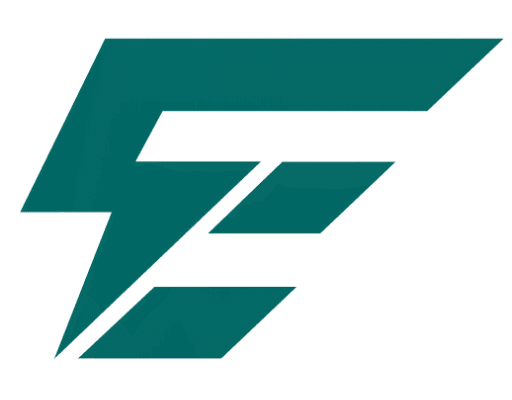Electric motors are the essential driving force behind a wide variety of machines and systems that consumer and business sectors depend on daily – their applications extending from heavy-duty industrial machines to small appliances in households. The most rugged motors may eventually require replacement or a maintenance program to cope with the overall stress and operate efficiently and smoothly. On the other hand, the process of making electric motor replacement parts can be overwhelming, as it requires considering a vast number of components, accessories, and technical details. This guide has come to the rescue, offering you a comprehensive overview of the elements that make up an electric motor, their operation, and essential information for changing the parts. Whether you’re a seasoned professional with extensive experience or a curious DIY enthusiast, this article will provide you with the information required to make the right choice and keep your motor running at its optimal performance.
Understanding Electric Motor Parts
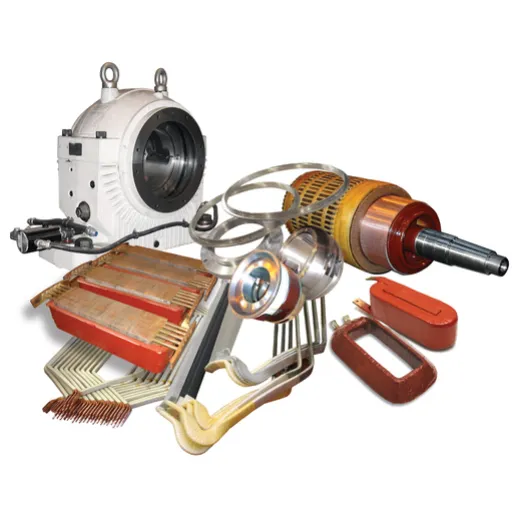
Electric motors utilize a limited number of fundamental components to operate efficiently. The primary ones are:
- Stator – The unmovable section of the motor that produces a magnetic field while carrying the current. The situation of this magnetic field and its force is an indispensable element in the whole movement process.
- Rotor – The part of the motor that rotates. It is the one that interacts with the magnetic field of the stator, which is why the rotor spins and mechanical energy is produced.
- Bearings – They hold the rotor and reduce the friction, making the rotation smooth.
- Shaft – It is the part that is connected to the rotor and carries the mechanical energy produced by the machine or device it is activating.
- Windings – They are the wire coils on the stator or rotor where electricity flows and where the magnetic field is amplified.
- Housing – This is the protective covering that surrounds and protects all the internal components of the motor from damage by the outer environment.
If you can recognize the parts that make up an electric motor, you will also be able to ensure that you are performing proper maintenance, the motor is operating well, and thus have a longer lifespan for the motor. All this reasoning also applies to easy and less costly repairs and replacements when needed eventually.
Key Types of Motor Parts
| Part | Description | Key Points |
|---|---|---|
| Rotor | Rotates to generate mechanical power. | Type, size, material |
| Stator | The stationary part generates an electromagnetic field. | Material, windings, magnetic core |
| Bearings | Reduces friction for smooth rotor movement. | Type, load capacity, lifespan |
| Windings | Conducts electricity, creates magnetic field. | Resistance, insulation, arrangement |
| Housing | Encloses and protects motor components. | Material, cooling system, dimensions |
| Shaft | Transfers torque to external loads. | Material, dimensions, alignment |
| Commutator | Switches current direction in windings. | Material, durability, design |
| Brushes | Transfers current to the commutator. | Material, wear rate, size |
| Fan | Cools internal components of the motor. | Material, airflow capacity, design |
| End Bells | Supports bearings and motor ends securely. | Material, strength, alignment |
Common Issues Leading to Replacement
Electric motors face various issues and problems that can lead to the decision to invest in replacement parts or even entire units. One of the most common problems that arises is overheating, and mistakenly secured lots, poor ventilation, or bad bearings are the leading causes of this. Overheating can melt insulation, which in turn can result in losing efficiency and motor breakdown. Another problem parallel to the chief defect is the electrical conductance loss in the commutator and brushes due to wear caused by extended usage, improper alignment, or low-quality materials, which results in not only poor current transfer and sparking but also noise.
Shaft misalignment or bearing failure may also cause vibrations to increase, thereby shortening motor life. Additionally, foreign matter can accumulate in the fan or windings, preventing effective cooling due to low airflow. Deterioration of housing, end bells, or the internal wiring due to environmental factors causes corrosion of electric motors. Regular maintenance and observation of the machines will not only help identify these problems at their early stages but also extend the service life of your motor.
Selecting the Right Replacement Parts
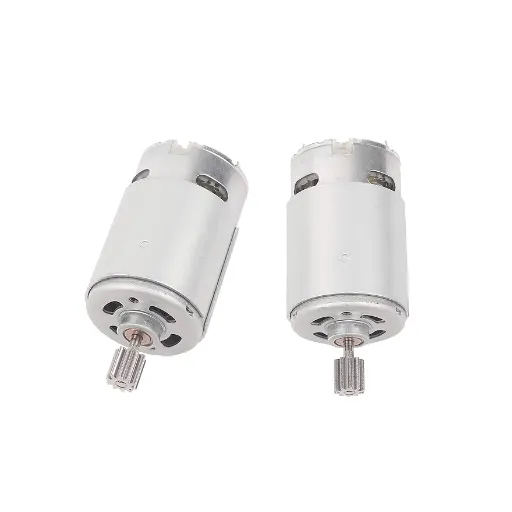
When choosing suitable spare parts for any motor, it is crucial to check the compatibility and the standard. Initially, focus on the dimensions of the old part. Concerning that, the size, material, and producer information should be examined to avoid mismatching. Go ahead and pick up the pieces of a trustworthy and established brand to achieve the best and long-lasting results possible. Additionally, you should verify that the replacement part complies with the relevant industry standards and certifications. If it’s unclear, seek guidance from the motor’s manual or a well-experienced technician who can assure the part beforehand. The whole emphasis is on these aspects; thereby, the motor’s efficiency will be retained and its life extended.
Identifying the Correct Replacement Part for Your Motor
It is essential to consider the motor’s specifications when identifying the correct replacement part. Begin the process by locating the nameplate, typically found on the motor. This nameplate provides the most critical information, including the model number, serial number, voltage, horsepower, RPM, and the manufacturer’s name. These are the pieces of information necessary to find parts that will be a perfect match for your motor. Moreover, be clever to look up parts that are suitable for your motor’s make and model. Although it may be a bit difficult, it is possible to obtain parts in the specific case that are not only the best in performance but also very affordable.
The use of resources provided by professional motor manufacturers and suppliers, who often offer comprehensive catalogs or digital tools that enable you to identify and match parts with specific motor configurations easily, is a highly efficient way to resolve your motor issue. It is highly recommended that part numbers and specifications be thoroughly checked in every database to ensure the replacement part fits seamlessly into your system without any problems. Additionally, consider the latest technological advancements or higher-tech versions of the part, designed for improved performance and reduced energy consumption. Keeping abreast with the latest technology and market trends will not only allow you to make a well-informed choice but also maintain your motor’s reliability through the process.
OEM vs. Aftermarket Parts: What You Need to Know
Being aware of the difference between OEM (Original Equipment Manufacturer) parts and aftermarket parts is essential when choosing replacement parts for your engine. The OEM parts are produced by the original manufacturer, thus ensuring a perfect fit and compliance with the original system’s specifications. Typically, these parts are backed by the manufacturer’s warranties, and they carry a reputation for being of first-rate quality and reliable products. On the other hand, they are likely to be more costly, and one might even encounter a situation where they are challenging to obtain due to the limited number of models and their age.
On the other hand, aftermarket parts are manufactured by third-party companies, and for this reason, a wider variety is available at a considerably lower price. The majority of aftermarket parts are engineered to be as good as, or even better than, the original factory parts; hence, they set the standards and are considered efficient and less expensive. However, the standard of the parts can be significantly different from the manufacturer’s reference. Without thorough research and the selection of well-known brands, this scenario is almost impossible to prevent. However, beyond this, the aftermarket business is also a venture where they can lead improvements, both in terms of features and quality, especially when compared to the original parts.
How to Request Replacement Parts from Distributors
The process of obtaining replacement parts from distributors can be simplified if one follows a systematic approach. To begin, you will first need to identify the exact part required for your equipment by referring to the manual or using the model and serial number, thereby avoiding errors that result from using the wrong parts. A majority of distributors generally make online catalogs or search tools available, which are specially designed to help customers find the products they need by providing them with the brand name and model. When searching, be careful with the numbers and letters of the parts, and try to find the closest matches, such as product models and their variations. Eventually, speak to the distributor using their preferred channels, listed as phone, email, and online forms, and you can at least find a process that you are familiar with, which can answer your needs. You can also inquire about stock availability, lead times, and warranties.
In cases where the product is highly demanded or specialized, the buyer may request alternative opportunities, such as equivalent products from the aftermarket or different suppliers within the distributor’s network. Some of these suppliers may also offer the option to set up notifications for restocks. The deal can be absolutely reassured by checking all order details, getting a written quote, and validating the price inclusive of taxes and shipping costs. It can prevent the miscommunications and unwanted charges that can happen. Moreover, if one builds a trustworthy relationship with the distributor, they can also benefit from better customer service and access to technical advice on part replacements.
Popular Types of Electric Motor Replacement Parts
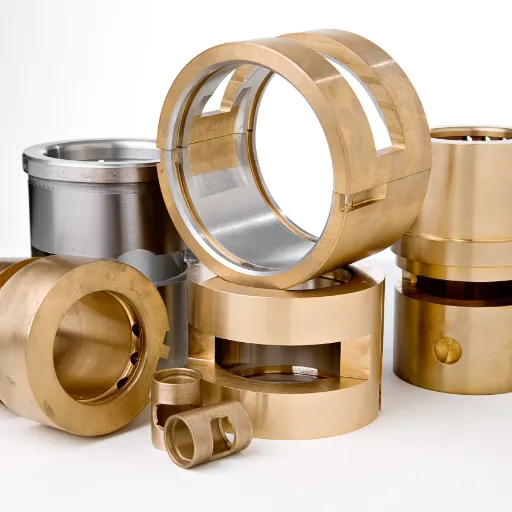
Bearings
Bearings come in handy for reducing friction and ensuring the motor’s smooth operation. They play a significant role, as they support the shaft of the motor and allow it to rotate smoothly. Bearings that are damaged can result in a noisy motor or one that is so hot to the touch that you will not be able to touch it.
Brushes
Carbon brushes are typically found in certain types of motors and transfer the electrical current to the rotating part of the motor. As brushes wear out, they eventually need to be replaced so that the motor can deliver consistent performance.
Capacitors
Start and run capacitors are among the most critical components in many motor types. They are the ones who see the motor of that energy needed to start it, and it will keep running smoothly.
Windings
Damaged or incorrectly wound windings can indeed be a problem, causing the motor to lose some of its power. Consequently, it is not possible to get the most out of the motor unless these damaged or burnt windings are actually replaced or repaired.
Seals and Gaskets
They serve as a barrier to the motor, protecting it from contaminants such as dust particles, soil, and moisture. Seals and gaskets may lose their ability to stop these over time, which can result in motor damage unless they are replaced.
Motor Brushes: Importance and Replacement Guidelines
Motor brushes play a crucial role in the performance of electric motors, particularly in DC motors. As one of the smallest components in a motor, they are essential in that they carry electricity between the stationary wires and the rotating part of the motor, thus maintaining the current. The radial brushes must be adequately maintained to prevent voltage drop from the motor, allowing for maximum torque and optimal speed, as well as to avoid oscillations. This is because good ohmic continuity of electricity rules out the presence of arcs, and the main enemy of the motor collector is the arc. This happens when a motor brush is worn out, and it means that noise and vibration become inevitable because the brushes will not be able to rotate smoothly on the collector.
The following steps can be taken for renewing motor brushes. First, determine the size and type of brush you need for your motor, and then consider turning the power supply off while it is still on. Have the holder and brushes removed and cleaned, as it is crucial to have no trash in the slots of the holder where the brushes fit. Lastly, align the brushes properly so they move smoothly on the collector without missing. Regular checks are advisable to detect brush wear early and thus prevent any further repair costs associated with neglecting to inspect the brush ends. By employing the best quality brushes, a motor’s life can be prolonged, and its downtime minimized. Thus, they are considered a very significant investment for the long-term trustworthiness of the motor.
Gearboxes and Gear Assemblies: When to Replace
Gearboxes and gear assemblies are considered crucial parts of various mechanical systems, and maintaining the right timing to replace this equipment can save hours of downtime and expenses. Clues associated with wear and tear include strange sounds, such as grinding or clicking, abnormal movement, heating, or output that is significantly less than the expected level. Despite the primary and general repair and the equipment always being available as new, mishandling, vibration, and insufficient lubrication, which are some of the factors that cause natural wear, can still be problematic after several years. The need to replace can also be indicated by other standards when it has already reached the critical stage. Still, it is also essential to consider symptoms such as loosening of the parts and visible wear on the teeth.
Additionally, performing routine checks and tracking ongoing trends in torque and temperature will help you identify problems at the earliest stage. Following the manufacturers’ suggestions and setting up a comprehensive maintenance calendar are the two most important steps to take if you want to enjoy a long lifespan for your gearboxes and assemblies. Moreover, updating your operations to use the latest high-efficiency gear designs during part changes can significantly enhance productivity and energy efficiency.
Maintenance and Installation of Replacement Parts
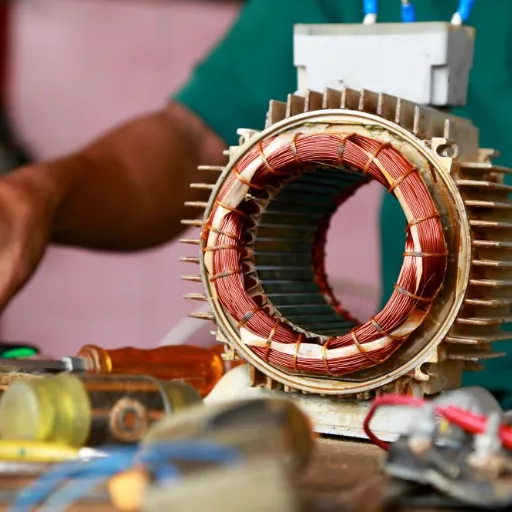
The installation of new parts and their proper maintenance are essential factors for ensuring no failure and optimal efficiency. Following the same manufacturer’s instructions is very important as they are the most suitable ones in the manufacturer’s opinion. One should also use and work with the specified tools only. When working with moving parts or electrical equipment, ensure the environment is clean and completely free from dust or gas, and never allow water or oil to come into contact with any parts of the equipment.
Maintenance-wise, it is somewhat of a manual task, but it is definitely worth the while to have a regular check-up to examine the state of the replacement parts. Following the manufacturer’s lubrication instructions will also help prevent the heat and the wear caused by friction. Part replacement should be as quick and as frequent as possible. Moreover, continually studying maintenance activities cannot only help track performance but also identify current issues, ensuring the machine remains reliable and safe in the long run.
Essential Tools for Electric Motor Repair
| Tool Name | Purpose | Key Consideration |
|---|---|---|
| Multimeter | Measures voltage, current, and resistance | Select one with adjustable ranges for accuracy |
| Insulation Tester | Checks insulation resistance | Essential for diagnosing electrical faults |
| Bearing Puller | Removes motor bearings safely | Choose an appropriate size for motor specifications |
| Torque Wrench | Ensures precise tightening of bolts | Avoids over-tightening or under-tightening |
| Electrical Tape | Insulates exposed wires | Use high-quality, heat-resistant tape |
| Screwdrivers Set | Tightens or removes screws | Include multiple sizes and types |
| Soldering Iron | Repairs or connects electrical components | Opt for temperature-controlled variants |
| Allen Wrench Set | Adjusts motor components secured with hex screws | Ensure compatibility with motor bolt sizes |
| Dial Indicator | Measures alignment and shaft runout | Necessary for precise alignment operations |
| Non-Contact Thermometer | Checks motor overheating | Useful for detecting temperature irregularities |
| Wire Strippers | Cuts and strips electrical wires | Ensure it accommodates various wire gauges |
| Oscilloscope | Analyzes electrical waveforms | Essential for advanced troubleshooting |
Step-by-Step Guide to Installing Motor Parts
1. Prepare the Workspace
Please start from the point at which your workspace is spick and span, well-illuminated, and free from unapplied material. With absolute reliance upon safety measures, the necessary personal protective gear, such as safety gloves and goggles, must be worn. To facilitate the installation process, have the required tools, including those listed in the preparation, at hand and arranged in an orderly manner.
2. Verify Motor and Components
First, examine the motor and other corresponding parts to ensure they fit and are of good quality. Inspect for any signs of damage from transportation or manufacturing defects. All nuts, wires, and supporting structures must meet the specifications for easy installation.
3. Mount the Motor
Place the motor in its designated location on the base or frame. Take the level and do the alignment check. Use screws that fit snugly to secure the motor with the correct tension, ensuring it does not move during operation.
4. Alignment and Coupling
For precise alignment of the motor drive and the driven equipment, like a gearbox or pump, use a dial indicator. Aligning them properly not only prevents damage to the equipment but also extends its life. Join the two parts through a coupling, but only after ensuring that it is tight and holds firmly without any swing or shift of the parts.
5. Connect Electrical Wiring
Refer to the wiring diagram provided by the motor manufacturer for connecting the electrical components. Use wire strippers to condition the wires for optimal fit in the terminals, ensuring a strong connection. Recheck all connections to ensure they are in the correct order, as even one incorrect connection can cause the system to malfunction or increase safety hazards.
6. Check and Calibrate Sensors
When the motor already has temperature or vibration sensors installed, ensure they are correctly connected. Use a non-contact thermometer to measure the temperatures at which the sensor will be operating, once the system is up and running.
7. Test Electrical Waveforms
Use an oscilloscope to analyze electrical waveforms and ensure a constant and accurate power supply to the motor. Any deviations in the waveforms must be addressed before proceeding.
8. Final Inspection and Startup
Inspect the finales of all parts thoroughly to ensure they are securely fixed in place and properly aligned. Ensure that safety measures, such as protective equipment, are in place. Start the motor gradually under power, and simultaneously watch for unusual noises, vibrations, or temperature increases. If all signs are within normal limits, the motor is ready for operation.
Conversion Kits and Accessories for Electric Motors
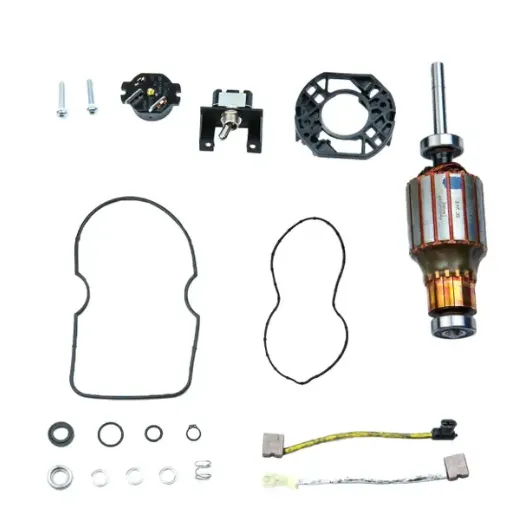
Electric motor upgrades are available in the form of conversion kits and accessories, designed to increase performance, efficiency, and the motors’ range of applications. Opinions may vary, but common choices are:
- Variable Frequency Drives (VFDs): Variable Frequency Drives (VFDs) are used to control the speed and torque of motors, resulting in energy savings and smoother operation.
- Mounting Kits: Mounting Kits are used to adapt motors for specific applications, featuring the provision of brackets or base plates for the most secure installation.
- Couplings and Adapters: Couplings and adapters serve to establish the correct connection between the motor and the driven equipment, and when properly installed, they minimize misalignment.
- Cooling Systems: Cooling Systems are essential to keep motors operating within safe temperature limits, especially in high-demand applications.
- Shaft Extensions and Gearboxes: Shaft Extensions and Gearboxes are two means of taking things one step further by adjusting speed and torque to the level required by the actual application.
Always choose kits and accessories that are compatible with the motor, as recommended by the manufacturer, to ensure safe and practical integration.
Benefits of Using Conversion Kits
- Cost-Effectiveness: By using conversion kits as an alternative to purchasing a new set of equipment, existing equipment can be modified, resulting in significant cost savings. Research indicates that businesses can save up to 30% of the costs incurred when renewing their equipment by installing conversion kits.
- Enhanced Efficiency: Motor performance is one area where conversion kits help improve, and they also meet the specific conditions of various applications, contributing to better energy efficiency. High-efficiency kits, for example, may reduce energy usage by 10-20%, depending on the specific environment.
- Application Flexibility: The conversion kits enable adaptation to various tools and machines, allowing operators to configure their equipment according to different operational needs. There is no need for them to buy new motors or gear systems.
- Time-Saving Maintenance: The plug-and-play concept behind these kits makes the updating and repair process easy, thereby minimizing downtime caused by incompatible parts. Some quick and easy-to-install kits can save about 40% of maintenance time.
- Extended Equipment Lifespan: The use of conversion kits typically benefits the system in three key ways: first, it replaces hard-to-get parts; second, it enhances the system’s compatibility with the rest of the motor and equipment; and third, it compensates for the system’s rough treatment. Due to the use of conversion kits, the frequency of repairs will be drastically decreased.
- Customization Options: The kit comprises parts that are often designed and require high precision, such as special shaft extensions or more complex cooling systems; hence, it is the solution for industries with particular technological demands, such as those in the mining sector.
Choosing the Right Kit for Your Electric Motor Model
Selecting the right kit to convert or upgrade your electric motor is not something that can be done haphazardly. Among other things, it will be necessary first to recognize the motor’s essential characteristics, such as its physical size, voltage, power rating, and the location where it will be operating. It is, for instance, possible for high-performance motors working in harsh industrial conditions to truly maximize the benefits of kits equipped with advanced oil cooling systems or the finest insulating materials. Also, ensure the compatibility of the existing motor components and check if the package can cater to the specific needs or modifications that the application requires. Through the guidance of the manufacturers’ technical team, as well as a thorough study of the product documentation, a deep understanding of the products and the necessary tasks will be developed. This will enable frictionless integration, enhancing the efficient operation and longevity of the motor.
Reference Sources
-
Vibration analysis of reconditioned high-speed electric motors
- Key Findings: This study focuses on the impact of replacing motor parts such as bearing casings, rotors, stators, and bearings during repairs. It highlights that reconditioned motors often deviate from their original specifications, leading to potential performance issues.
-
Determining the Quality of Electric Motors by Vibro-Diagnostics
- Key Findings: This paper examines the reliability of electric motors after part replacements during repairs. It finds that disassembly and part replacement can significantly reduce the reliability of electric motors.
Frequently Asked Questions (FAQs)
Q: How do I choose the right motor parts for my electric motor?
A: Getting the correct motor parts for your electric motor requires that you know the exact model and specifications of your device. This entails verifying the RPM and duty rating parameters to ensure the compatibility of the respective parts. Make a note of the point where you will only accept OEM parts, as these have been engineered to match the original motor’s parameters and will meet the required performance equally. It is equally crucial to consider the availability of parts for electric motors designed by well-known companies, as their products are of superior quality. Do not be afraid to seek professional advice or consult your motor’s manual for guidance on the selection process.
Q: What maintenance is required for electric motor parts?
A: Proper care of the electric motor parts can result in the longevity and high performance of the motor. This care includes routine checking and replacing of the motor brushes, examining stator health, and ensuring that all parts, such as the gearbox and fan, are in perfect working order. It is necessary not to overlook cleaning the motor assembly, as dirt buildup could cause the parts to not move easily from one position to the next. Furthermore, the lubrication of the moving parts and tightening any screws or bolts that have turned out loose can be a way to prevent wear and tear that comes earlier than expected. With a bit of time spent on the above-mentioned maintenance procedures, the motor can be kept in a good condition economically, and will work at its best; hence, it will be assumed that no electric-motor-replacement-related costs will be incurred during the operation of your motor.
Q: Where can I find premium electric motor replacement parts?
A: Specialized stores, as well as motor parts and accessories-focused online retailers, offer high-quality electric motor replacement parts. Of course, you can find almost all the other parts for different motors made by major manufacturers. Even local stores specializing in automotive parts are likely to have some of the main components for electric motors, such as brushes, shafts, and other essential parts. Additionally, this may save you a significant amount of time, as they both retail and wholesale parts from various manufacturers. However, the parts’ compatibility with the motor needs to be checked based on the manufacturer and their technical requirements.
Q: What is included in an electric motor repair kit?
A: An electric motor repair kit usually comes equipped with a collection of parts, which are considered essential for routine repairs and maintenance. These kits may include components such as replacement brushes, bearings, and seals, which are necessary for maintaining the motor in good condition. In addition, tools for disassembly and assembly will be included in some of the kits, making it much easier for users to perform the repairs. When inspecting such kits based on the motor’s reputation, you may also encounter additional parts, such as fan covers and drip covers. Spending money to buy a repair kit can be a great idea when it comes to having all the parts in one place, and that too at a lower budget than the actual cost.
